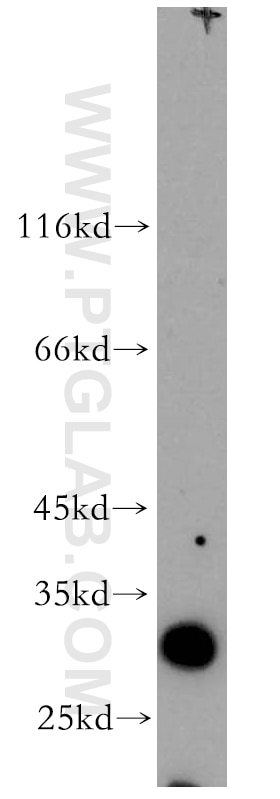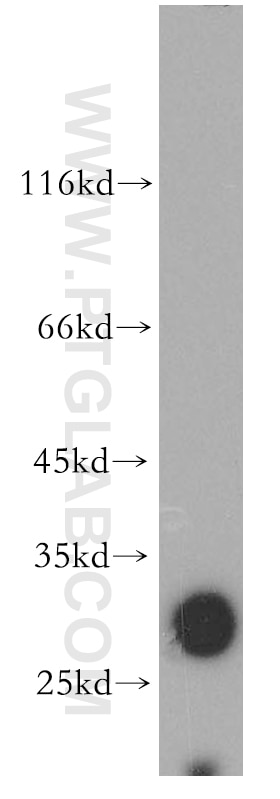SLC17A5 Polyklonaler Antikörper
SLC17A5 Polyklonal Antikörper für WB, ELISA
Wirt / Isotyp
Kaninchen / IgG
Getestete Reaktivität
human, Maus, Ratte
Anwendung
WB, ELISA
Konjugation
Unkonjugiert
Kat-Nr. : 13320-1-AP
Synonyme
Geprüfte Anwendungen
| Erfolgreiche Detektion in WB | humanes Nierengewebe, HEK-293-Zellen |
Empfohlene Verdünnung
| Anwendung | Verdünnung |
|---|---|
| Western Blot (WB) | WB : 1:500-1:2000 |
| It is recommended that this reagent should be titrated in each testing system to obtain optimal results. | |
| Sample-dependent, check data in validation data gallery | |
Veröffentlichte Anwendungen
| ELISA | See 1 publications below |
Produktinformation
13320-1-AP bindet in WB, ELISA SLC17A5 und zeigt Reaktivität mit human, Maus, Ratten
| Getestete Reaktivität | human, Maus, Ratte |
| In Publikationen genannte Reaktivität | Maus |
| Wirt / Isotyp | Kaninchen / IgG |
| Klonalität | Polyklonal |
| Typ | Antikörper |
| Immunogen | SLC17A5 fusion protein Ag3855 |
| Vollständiger Name | solute carrier family 17 (anion/sugar transporter), member 5 |
| Berechnetes Molekulargewicht | 495 aa, 55 kDa |
| Beobachtetes Molekulargewicht | 31 kDa |
| GenBank-Zugangsnummer | BC020961 |
| Gene symbol | SLC17A5 |
| Gene ID (NCBI) | 26503 |
| Konjugation | Unkonjugiert |
| Form | Liquid |
| Reinigungsmethode | Antigen-Affinitätsreinigung |
| Lagerungspuffer | PBS with 0.02% sodium azide and 50% glycerol |
| Lagerungsbedingungen | Bei -20°C lagern. Nach dem Versand ein Jahr lang stabil Aliquotieren ist bei -20oC Lagerung nicht notwendig. 20ul Größen enthalten 0,1% BSA. |
Hintergrundinformationen
SLC17A5 encodes a transmembrane protein, sialin, which transports free sialic acid across the lysosomal membrane. Mutations in sialin result in neurodegenerative sialic acid storage disorders, Salla disease (SD) and infantile sialic acid storage disease (ISSD). In the central nervous system, sialin is more abundant in neurons than in glia. It has been reported to be localized into lysosome in neuron but in plasma membrane in nonneuronal cells (PMID: 15006695).
Protokolle
| PRODUKTSPEZIFISCHE PROTOKOLLE | |
|---|---|
| WB protocol for SLC17A5 antibody 13320-1-AP | Protokoll herunterladen |
| STANDARD-PROTOKOLLE | |
|---|---|
| Klicken Sie hier, um unsere Standardprotokolle anzuzeigen |



